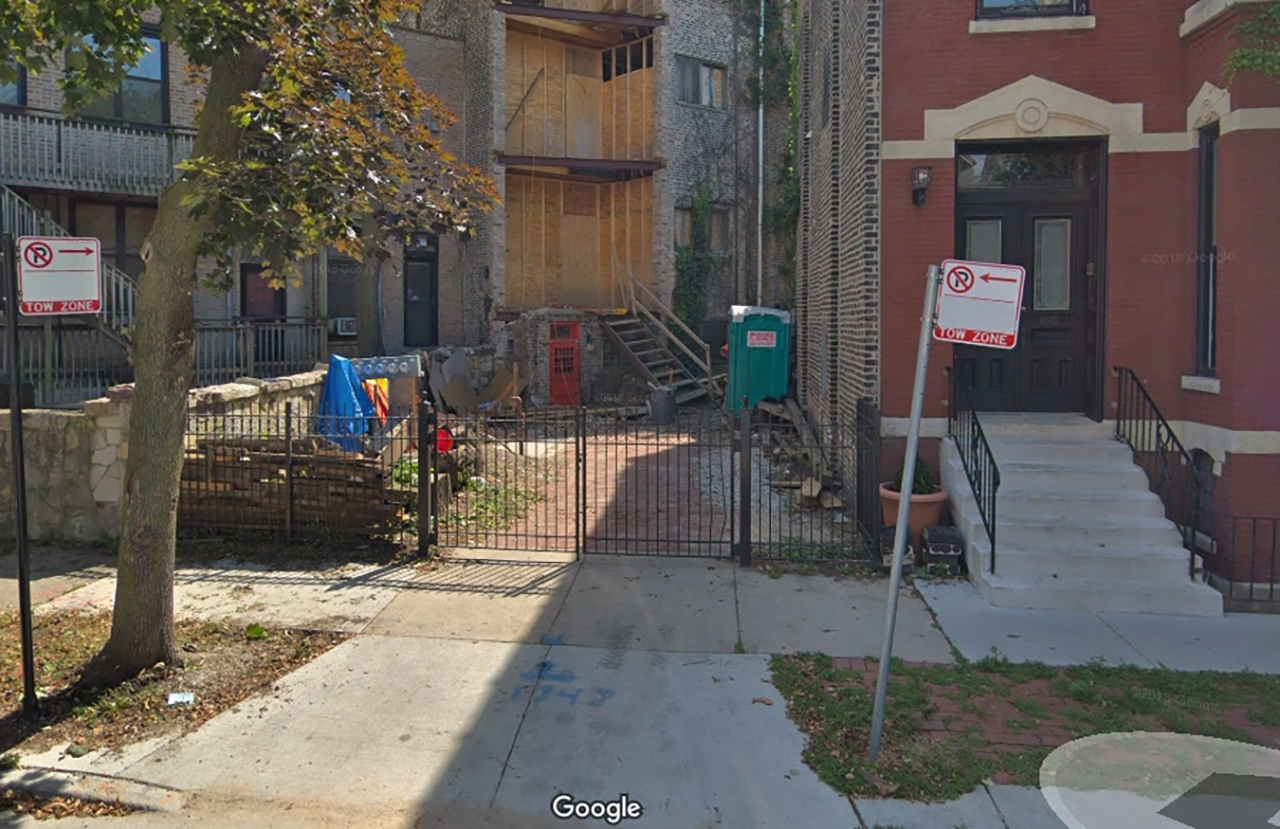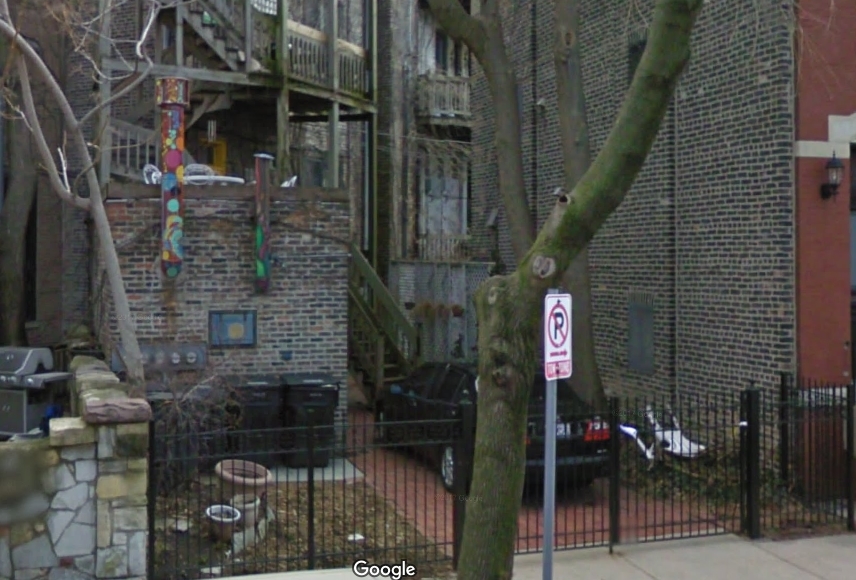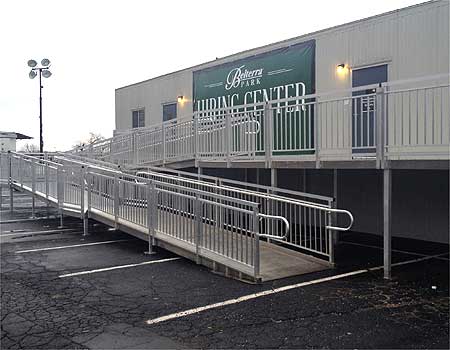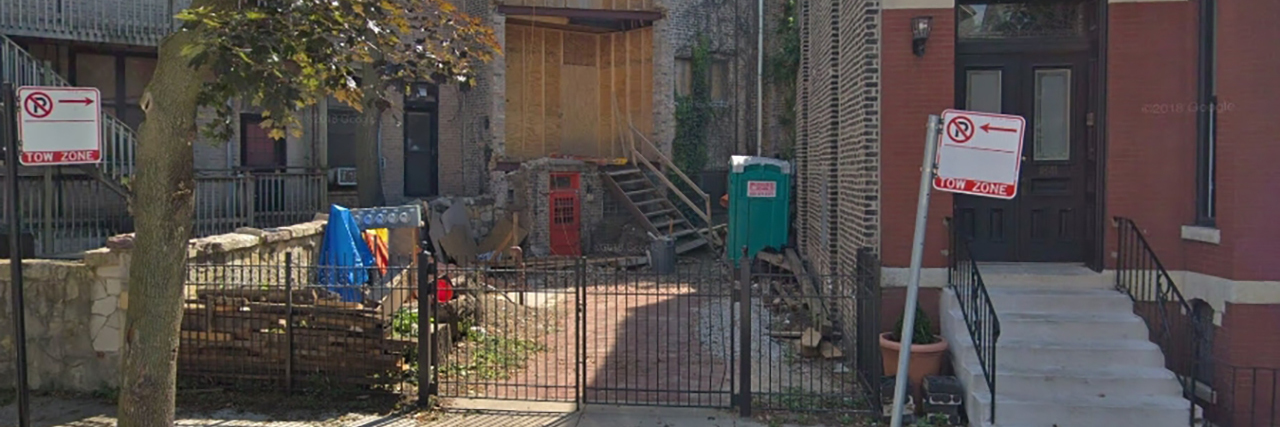Chicago Neighborhood Association Calls Proposed Home Remodel for Disabled Girl 'Horrible'
Sometimes the news isn’t as straightforward as it’s made to seem. Karin Willison, The Mighty’s Disability Editor, explains what to keep in mind if you see this topic or similar stories in your newsfeed. This is The Mighty Takeaway.
A neighborhood in Chicago, Illinois has gotten into the Scrooge spirit this holiday season with its fight against a home remodel for a disabled 13-year-old girl.
In 2017, Bill Deakin and Lisa Diehlmann, whose daughter uses a wheelchair due to a degenerative condition, applied for permits to remodel a home they purchased in the Old Town Triangle neighborhood of Chicago. The former apartment complex still had beautiful original stained glass and woodwork but had been a run-down mess for years. Neighbors called it “the rat house.” When the family bought the property, they submitted plans to the city for a full remodel, including a garage and elevator to accommodate their daughter’s needs.
Their plans were approved, and the project should have moved forward. But before they could begin construction of the garage, members of the Old Town Triangle Neighborhood Association found out about it and have spent the past year trying to stop them, calling the proposed remodel “horrible” and demanding that the Zoning Board of Appeals deny the permit. After a hearing on November 15, the board issued a continuance and is set to rule on the matter December 21 if the parties can’t reach an agreement.
This situation is appalling and heartbreaking, not because of the daughter’s disability, but because of the way she and her family are being treated. Some of the neighbors who’ve deemed the remodel “horrible” have made comments that are truly horrific. In a letter to the Zoning Board of Appeals and Alderman Michele Ward, who represents the district, Old Town Triangle Association President Steve Weiss said, “What I don’t understand is why they chose to buy a house in a Landmark Zone when you have these needs. I don’t mean to be heartless or uncaring but this is not the neighborhood for that.”
Despite his claims of not being heartless, this is one of the most repulsive, ableist statements I’ve ever read. Not the neighborhood for that? So where exactly are people with disabilities supposed to live? He seems to imply people with disabilities and our families don’t belong in certain neighborhoods — and his excuses about aesthetics don’t hold up to scrutiny. If he thinks it’s right to deny a little girl access to her own home because it won’t look exactly like it did in 1891, why isn’t he demanding that all his neighbors disconnect their electricity and exchange their cars for horses and carriages? The issue here isn’t historic preservation, it’s antiquated attitudes towards people with disabilities.
Weiss’ letter to the zoning board is dripping with entitled vitriol. He complains about the Deakin-Diehlmann family’s need to build a two-car garage as if it is a luxury, saying they should have “graciously” asked for one car just to meet their needs, implying that the remodel is primarily to raise the value of their property. This comment shows he clearly has no understanding of his disabled neighbor’s circumstances. The family has a wheelchair accessible minivan, which means they need about 8 feet of extra space beside it for the ramp to deploy and their daughter to get in and out. A single-car garage would be too narrow. And putting the garage underground, as the association has suggested, is potentially hazardous as accessible vans sit low to the ground. Steep driveways to underground garages can cause lowered-floor vans to bottom out, damaging the undercarriage as it scrapes the concrete and potentially pushing the exhaust system against the gas tank. This family should not have to risk their car exploding from a cracked or melted gas tank because their neighbors don’t want to look at a garage.
This photo from Google Maps shows the area where the family wants to build the garage the neighbors across the street claim would be ugly.

Here’s a photo of the same space during its “rat house” days in 2009. The graffiti, scattered junk and row of trash cans they apparently never complained about make for a gorgeous view, don’t you think?

Weiss goes on to say Deakin and Diehlmann should have “put their child’s needs first and moved to a neighborhood more conducive to her needs.” What makes this neighborhood not conducive to her needs? Only the neighborhood association he represents, which is doing its best to make her and her family unwelcome because of an apparent belief that people with disabilities don’t deserve a home that is both historic and accessible.
In fact, the family almost certainly has very good reasons for wanting to live in this particular neighborhood. Chicago has a robust accessible public transportation system, which supports the independence of over 600,000 residents with disabilities. Urban areas also provide easy access to medical professionals and hospitals. All things considered, it’s one of the best cities to grow up in if you use a wheelchair. This family deserves approval and support for thinking about their daughter’s future, but instead, they are being harassed and pressured to give up their dream home. I hope they don’t give in.
The Old Town Triangle Neighborhood Association displays a particularly toxic pattern of ableism I’ve experienced far too many times — ignorant, often financially well-off people who denigrate accessible design as ugly and accuse those of us who need it of being unreasonable. I had a similar experience with my condo association when I lived in Los Angeles. They claimed simple modifications to the building, like changing the front door handle from a knob to a lever would be “unsightly,” and a resident refused to switch parking spaces with me even though I couldn’t deploy my ramp in my assigned space. I had numerous problems over the seven years I lived there, and finally couldn’t take it anymore.
Accessibility is not a luxury and it’s not something “special.” It’s a human right. Historic architecture is beautiful, but that doesn’t mean we should also retain the worst parts of history. Should historic buildings be exempt from fire safety codes, or allowed to exclude or segregate people by race because they were originally built that way? Of course not. Likewise, we shouldn’t glorify a time when most buildings weren’t accessible by prohibiting someone from making their own property usable for their needs.
In my experience, the strongest resistance to accessibility based on historical status seems to occur when a building is not actually very significant. Most truly significant historic buildings in the United States, such as the Revolutionary and Civil War-era sites for which legal accessibility exemptions were designed, are at least partially accessible. Many even have elevators. In this case, we’re talking about a building where no one famous lived, that had sat derelict for years and was aptly named the rat house. There’s absolutely no reason why such a home shouldn’t be made accessible by those who are investing substantial time and money into restoring it.
We also need to move beyond the false idea that accessibility equals ugly. Accessibility can and should be integrated into the design of a building, blending with or even enhancing its existing style. When accessibility isn’t an afterthought, the results can be beautiful. Just look at the Guggenheim Museum in New York City or the Ed Roberts Campus in Berkeley, California. These buildings showcase the beauty of ramps and use principles of universal design — the idea that accessibility isn’t just for people with disabilities, it benefits everyone.
Accessibility can be seamless and designed to blend in with more traditional architecture. Ironically, the Deakin-Diehlmann family’s much-criticized renovation plan is a great example of integrated accessibility. They chose the home because of its historical details and are committed to preserving them. They devised a creative way to make the home accessible without it being obvious at all, using a garage which can easily be designed to resemble a carriage house from the outside. They clearly care about how their home looks, despite their detractors claiming otherwise.
Perhaps the Deakin-Diehlmann family should remind their neighbors they have other options for making their house accessible, like buying one of these hideously ugly modular metal ramp kits and making a crisscross path up to their door. Hey, it wouldn’t involve any structural changes to the building!

As a person with a disability, living in an accessible home is everything to me. It means freedom, comfort and a sense of safety that can’t fully be put into words. Right now, a mom and dad and their little girl are without that safety, and have spent over a year with their future in the hands of people who want to rip away their chance to turn a broken old building into a warm family home that will last a lifetime. Please don’t let those Grinches steal yet another holiday from them.

